Mercedes EQB vs Renault Scénic – Which model is better for everyday use?
Both models have their strengths – but which one suits you more?
Compare performance, efficiency, price and space directly: Mercedes EQB or Renault Scénic?
Costs and Efficiency:
Price and efficiency are often the first things buyers look at. Here it becomes clear which model has the long-term edge – whether at the pump, the plug, or in purchase price.
Renault Scénic has a distinct advantage in terms of price – it starts at 34600 £, while the Mercedes EQB costs 45900 £. That’s a price difference of around 11241 £.
In terms of energy consumption, the advantage goes to the Mercedes EQB: with 15.20 kWh per 100 km, it’s slight more efficient than the Renault Scénic with 16.60 kWh. That’s a difference of about 1.40 kWh.
As for range, the Renault Scénic performs to a small extent better – achieving up to 598 km, about 63 km more than the Mercedes EQB.
Engine and Performance:
Under the bonnet, it becomes clear which model is tuned for sportiness and which one takes the lead when you hit the accelerator.
When it comes to engine power, the Mercedes EQB has a noticeable edge – offering 292 HP compared to 218 HP. That’s roughly 74 HP more horsepower.
In acceleration from 0 to 100 km/h, the Mercedes EQB is noticeable quicker – completing the sprint in 6.20 s, while the Renault Scénic takes 7.90 s. That’s about 1.70 s faster.
In terms of top speed, the Renault Scénic performs hardly perceptible better – reaching 170 km/h, while the Mercedes EQB tops out at 160 km/h. The difference is around 10 km/h.
There’s also a difference in torque: Mercedes EQB pulls convincingly stronger with 520 Nm compared to 300 Nm. That’s about 220 Nm difference.
Space and Everyday Use:
Beyond pure performance, interior space and usability matter most in daily life. This is where you see which car is more practical and versatile.
Both vehicles offer seating for 5 people.
In curb weight, Renault Scénic is somewhat lighter – 1822 kg compared to 2105 kg. The difference is around 283 kg.
In terms of boot space, the Renault Scénic offers hardly perceptible more room – 545 L compared to 495 L. That’s a difference of about 50 L.
In maximum load capacity, the Mercedes EQB performs barely noticeable better – up to 1710 L, which is about 40 L more than the Renault Scénic.
When it comes to payload, Renault Scénic slightly takes the win – 518 kg compared to 435 kg. That’s a difference of about 83 kg.
Who comes out on top?
Overall, the Mercedes EQB shows itself to be offers a more balanced package and secures the title of DriveDuel Champion.
It convinces with the more balanced overall package and proves to be the more versatile choice for everyday use.
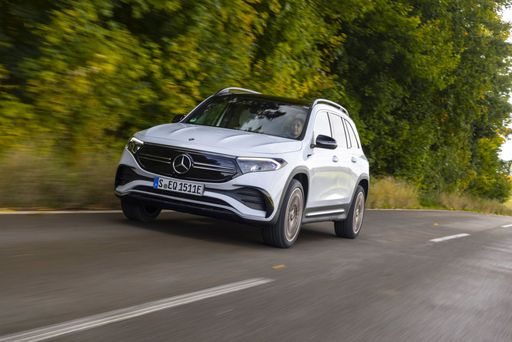
Mercedes EQB
Mercedes EQB
The Mercedes-Benz EQB is an all-electric compact SUV that seamlessly blends practicality with modern luxury. Its sleek design and spacious interior make it an attractive option for families seeking both style and function. With advanced technology and impressive range capabilities, the EQB is a testament to Mercedes-Benz's commitment to sustainable mobility.
details @ group-media.mercedes-benz.com
@ group-media.mercedes-benz.com
 @ group-media.mercedes-benz.com
@ group-media.mercedes-benz.com
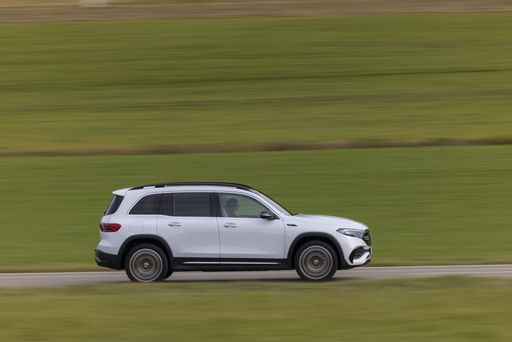 @ group-media.mercedes-benz.com
@ group-media.mercedes-benz.com
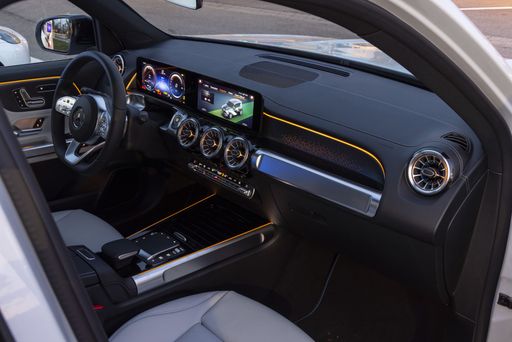 @ group-media.mercedes-benz.com
@ group-media.mercedes-benz.com
 @ group-media.mercedes-benz.com
@ group-media.mercedes-benz.com
Renault Scénic
The Renault Scénic, with its distinctive design, captures attention through its sleek and modern aesthetic. Its interior is thoughtfully crafted, offering ample space and comfort for family travel or long journeys. The Scénic stands out with a strong emphasis on practicality, making it an ideal choice for those seeking both style and functionality in a vehicle.
details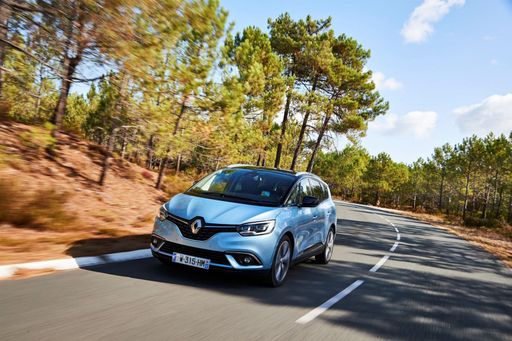 @ Renault
@ Renault
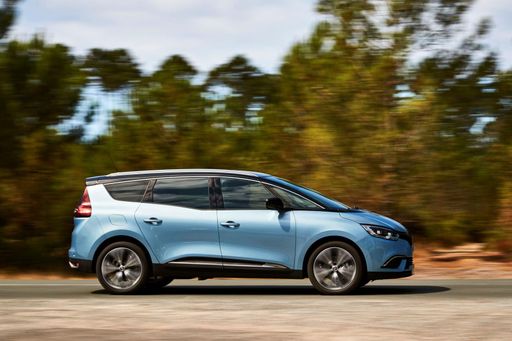 @ Renault
@ Renault
 @ Renault
@ Renault
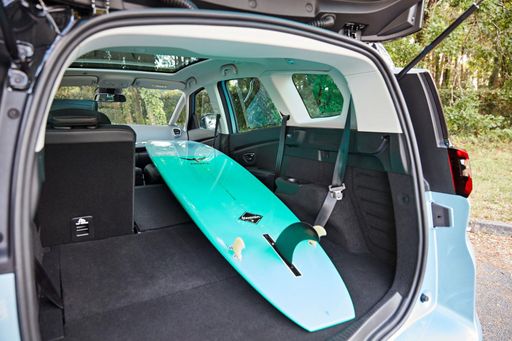 @ Renault
@ Renault
 @ Renault
@ Renault

|

|
|
|
|
Costs and Consumption |
|
|---|---|
|
Price
45900 - 58900 £
|
Price
34600 - 44000 £
|
|
Consumption L/100km
-
|
Consumption L/100km
-
|
|
Consumption kWh/100km
15.2 - 17.2 kWh
|
Consumption kWh/100km
16.6 - 17.5 kWh
|
|
Electric Range
468 - 535 km
|
Electric Range
420 - 598 km
|
|
Battery Capacity
70.50 kWh
|
Battery Capacity
-
|
|
co2
0 g/km
|
co2
0 g/km
|
|
Fuel tank capacity
-
|
Fuel tank capacity
-
|
Dimensions and Body |
|
|---|---|
|
Body Type
SUV
|
Body Type
SUV
|
|
Seats
5
|
Seats
5
|
|
Doors
5
|
Doors
5
|
|
Curb weight
2105 - 2170 kg
|
Curb weight
1822 - 1927 kg
|
|
Trunk capacity
495 L
|
Trunk capacity
545 L
|
|
Length
4684 mm
|
Length
4470 mm
|
|
Width
1834 mm
|
Width
1864 mm
|
|
Height
1654 - 1689 mm
|
Height
1571 mm
|
|
Max trunk capacity
1710 L
|
Max trunk capacity
1670 L
|
|
Payload
435 kg
|
Payload
514 - 518 kg
|
Engine and Performance |
|
|---|---|
|
Engine Type
Electric
|
Engine Type
Electric
|
|
Transmission
Automatic
|
Transmission
Automatic
|
|
Transmission Detail
Reduction Gearbox
|
Transmission Detail
Reduction Gearbox
|
|
Drive Type
Front-Wheel Drive, All-Wheel Drive
|
Drive Type
Front-Wheel Drive
|
|
Power HP
190 - 292 HP
|
Power HP
170 - 218 HP
|
|
Acceleration 0-100km/h
6.2 - 8.9 s
|
Acceleration 0-100km/h
7.9 - 8.6 s
|
|
Max Speed
160 km/h
|
Max Speed
150 - 170 km/h
|
|
Torque
385 - 520 Nm
|
Torque
280 - 300 Nm
|
|
Number of Cylinders
-
|
Number of Cylinders
-
|
|
Power kW
140 - 215 kW
|
Power kW
125 - 160 kW
|
|
Engine capacity
-
|
Engine capacity
-
|
General |
|
|---|---|
|
Model Year
2024 - 2025
|
Model Year
2025
|
|
CO2 Efficiency Class
A
|
CO2 Efficiency Class
A
|
|
Brand
Mercedes-Benz
|
Brand
Renault
|
What drive types are available for the Mercedes EQB?
The Mercedes EQB is available as Front-Wheel Drive or All-Wheel Drive.
The prices and data displayed are estimates based on German list prices and may vary by country. This information is not legally binding.
